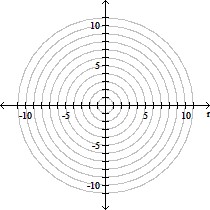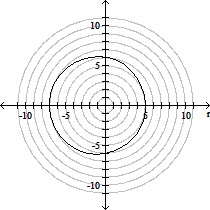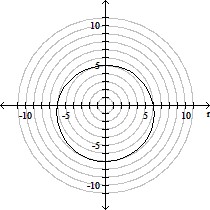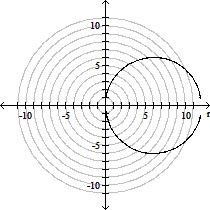Construct a probability model for the experiment.Spinner I has 4 sections of equal area, numbered 1, 2, 3, and 4, and Spinner II has 4 sections of equal area, labeled Red, Yellow, Green, and Blue. Spin Spinner I and then spin Spinner II.What is the probability of getting a 1 or 3 followed by Red?
What will be an ideal response?
S = {1 Red, 1 Yellow, 1 Green, 1 Blue, 2 Red, 2 Yellow, 2 Green, 2 Blue, 3 Red, 3 Yellow, 3 Green, 3 Blue, 4 Red, 4 Yellow, 4 Green, 4 Blue}; each outcome has a probability of 
The probability of getting a 1 or 3 followed by Red is 
You might also like to view...
Graph the polar equation.r = 6 - cos ?
A. 
B. 
C. 
D. 
Find the gradient field F of the function f.f(x, y, z) = x3e8x + y4z8
A. F = (1 + x)x2e8xi + y3z8j + y4z7k B. F = (3 + 8x)x2e8xi + 4y3j + 8z7k C. F = (3 + 8x)x2e8xi + (x3e8x + 4y3z8)j + (x3e8x + 8y4z7)k D. F = (3 + 8x)x2e8xi + 4y3z8j + 8y4z7k
Solve for x using an equivalent exponential expression.A city has been growing at a rate of 0.8% annually. If there are currently 3,911,000 residents in the city, how many (to the nearest ten-thousand) would be living in this city six years from now? Use the function  .
.
A. 510,000 B. 4,130,000 C. 10,560,000 D. 4,100,000
Match the equation to the graph.(y - 2)2 = 7(x + 1)
A. 
B. 
C. 
D. 